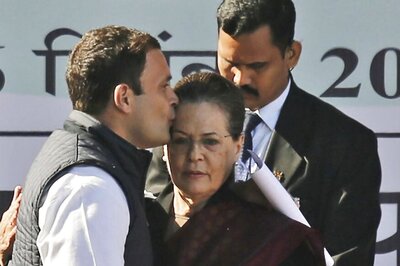
views
In India, cinema isn’t just a passion. It is an obsession. We have perhaps inherited this acute addiction from the man who started it all, 100 years ago — the Father of Indian Cinema, Dhundiraj Govind Phalke (1870-1944).
Dadasaheb Phalke, as we now better know him, held the first show of ‘Raja Harishchandra’ — which is widely considered the first Indian feature film — at Bombay’s Olympia Picture Palace on April 21, 1913. The commercial screenings started 12 days later, on May 3, 1913, at Coronation Cinematograph and Variety Hall, Sandhurst Road, Girgaum, Bombay.
Most of us have seen only fleeting glimpses of this bud that gradually grew into the mammoth movie industry that we have in India today. The actual film title spelled the name of the film as Raja Harischandra, minus an ‘h’.
There is some confusion on whether this film, preserved in the National Film Archives of India, is the actual 1913 film or a 1917 remake of the film.
“Raja Harishchandra. A performance with 57,000 photographs. A picture two miles long. All for only three annas” — This is how Phalke, Indian cinema’s first marketing wizard, promoted his creation. Phalke had to make his soundless cinema with higher ticket prices appealing to an audience who were hooked to stage plays, then the reigning form of entertainment.
‘Raja Harishchandra’ wasn’t the first Indian film, but it was the first indigenously produced feature-length film and Phalke’s story of making the film is as interesting as a movie plot.
‘Harishchandrachi Factory’, the 2009 Marathi film on Dadasaheb Phalke that centers on the making of the movie, is a must-watch. Had the film not been a biopic, it could have also passed as a well-made subtle comedy. This UTV-produced, Paresh Mokashi-directed movie was also India’s official nomination to the Oscars for Best Foreign Language Film. In case you haven’t watched it yet, my suggestion is that you see ‘Raja Harishchandra’ before you sit down to watch ‘Harishchandrachi Factory’. When you see the same scenes recreated almost a century later on a film canvas that’s much wider, the impact is that much greater.
Phalke is often compared to the French film pioneer Georges Melies — both considered the medium as an art form and also had expertise in magic tricks and that knowledge they made use of for special effects in their films.
The entire show, apart from the movie, included other forms of non-film entertainment as well. ‘Raja Harishchandra’ was also exhibited in London in 1914.
The story for the movie was from the great epic Mahabharata and espouses the belief that truth always triumphs. Harishchandra was a legendary pious king of Ayodhya who sacrificed his kingdom, wife, and child for the sake of truth. ‘Harishchandrachi Factory’ tells us that this story was a favourite with Phalke’s sons and his eldest son Bhalachandra Phalke also played Rohitashwa, Harishchandra’s son in the movie.
Another important reason why this story was chosen for the film was that Harishchandra was a popular theme in the Marathi and Urdu theatre of the day. The story again found itself in another first-of-its-kind movie, the first Marathi talkie, V Shantaram’s ‘Ayodhyecha Raja’ (1932), which was also released in Hindi, making it the first Indian film to be released in two languages.
‘Raja Harishchandra’ was shot in a bungalow (apart from other outdoor locations) called Mathura Bhawan (owned by one Mathuradas Makanji) located on a street in Dadar, Bombay, that is now rightly named Dada Saheb Phalke Road.
The acting was in traditional Indian folk theatre style, the influence of which along with Parsi Theatre was to remain on Indian acting for decades. In the absence of sound (that was to make an appearance in Indian cinema 18 years later with ‘Alam Ara’), there were title inserts between shots explaining the plot. In Raja Harishchandra (and most of the films of the silent era) these title plates were in two languages — English, the language of the elite, and Hindi (or other Indian languages) that the masses understood.
The Phalkes were also perhaps the first Indian film family. His entire family, including him, his wife Saraswati Phalke, and eight children (five sons and three daughters), were all involved in the filmmaking process, with Saraswati handling some of the technical processes, including developing the film. His daughter Mandakini Phalke was in fact one of the first female actresses on the Indian screen at a time when acting in films was a much-derided profession.
Dhundiraj Govind Phalke was to follow the initial success of Raja Harishchandra with other landmark films such as ‘Lanka Dahan’ (1917). A prolific filmmaker, Phalke went on to make over 100 films but died in poverty.
Of the original 3,700 feet of the original film (that took six months and 27 days to put together) only some fragments could be preserved by the National Film Archive of India, Pune, which includes portions of the first and the last reel of the film.
Read all the Latest Bollywood News and Regional Cinema News here

















Comments
0 comment